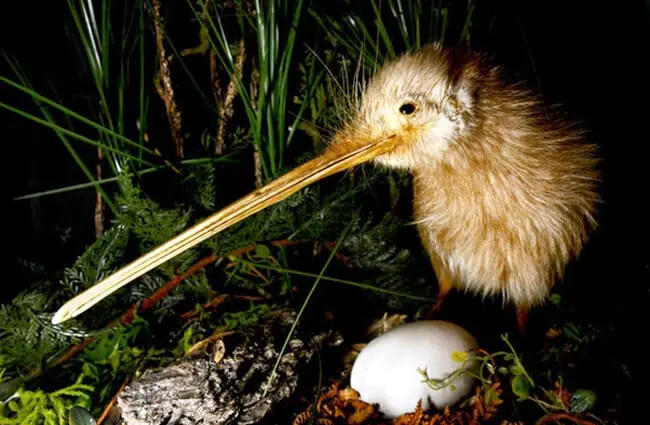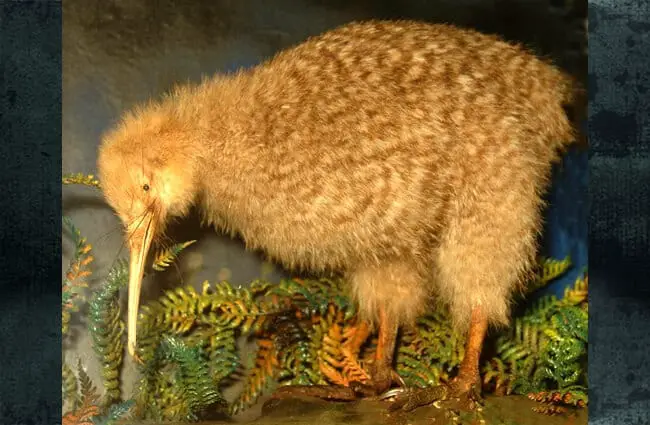The world holds many avian wonders, but few are as unique and captivating as the kiwi. Endemic to New Zealand, these flightless birds represent an evolutionary pathway distinct from most others, and their story is one of remarkable adaptation, ecological importance, and ongoing conservation challenges. This comprehensive guide delves into the fascinating life of the kiwi, exploring its history, behavior, habitat, and the crucial role it plays in its native ecosystem.
A Unique Bird: Introducing the Kiwi
The name kiwi encompasses five species of flightless birds belonging to the genus Apteryx. These birds are instantly recognizable by their long, slender beak, soft, hair‑like plumage, and stout legs. Unlike most birds, kiwis have nostrils at the tip of their beak, allowing them to sniff out food underground. Their size varies between species, ranging from the smaller Little Spotted Kiwi to the larger Great Spotted Kiwi. They are considered national icons of New Zealand, featuring prominently in the country’s culture and identity.

Species of Kiwi
- Great Spotted Kiwi (Apteryx haastii): The largest species, found in the South Island.
- Little Spotted Kiwi (Apteryx owenii): The smallest species, now largely confined to predator‑free islands.
- North Island Brown Kiwi (Apteryx mantelli): The most common species, found throughout the North Island.
- South Island Brown Kiwi (Apteryx australis): Also known as the Haast Tokoeka, limited to a few remote islands.
- Rowi (Apteryx rowi): Critically endangered, restricted to a small area of the South Island.
Evolutionary History: A Glimpse into the Past
The evolutionary origins of the kiwi are shrouded in mystery, but genetic studies suggest a Gondwanan ancestry. This means their lineage can be traced back to the ancient supercontinent that once connected New Zealand to other landmasses such as Australia and Antarctica. Over millions of years, isolated from other avian radiations, the kiwi evolved its unique characteristics. The loss of flight is believed to have occurred as the kiwi adapted to a forest‑floor environment, where foraging for invertebrates and fruits was more efficient than flying. The unique skeletal structure, including a pronounced keel bone, reflects the demands of a terrestrial lifestyle. Unlike most birds with pneumatized bones, kiwi bones are dense and marrow‑filled, another adaptation to a ground‑dwelling existence.
Habitat and Distribution: Where to Find the Kiwi
Kiwis are exclusively found in New Zealand, inhabiting a diverse range of habitats. These include temperate rainforests, shrublands, and even alpine areas. They prefer areas with dense undergrowth, providing shelter and foraging opportunities. The distribution of each species varies, with some being restricted to specific regions or islands. The North Island Brown Kiwi is the most widespread species, while others, such as the Rowi and South Island Brown Kiwi, have extremely limited ranges. Maintaining suitable habitat is crucial for the survival of all kiwi species. Forest fragmentation and loss due to land clearing pose significant threats.

Diet and Foraging Behavior: What Do Kiwis Eat?
Kiwis are omnivores, with their diet primarily consisting of invertebrates such as earthworms, insects, and larvae. They also consume fallen fruits, seeds, and occasionally small reptiles. Their long, sensitive beak is perfectly adapted for probing the soil and leaf litter in search of food. Kiwis are largely nocturnal foragers, using their keen sense of smell and touch to locate prey in the dark. They will often follow the scent of earthworms, digging into the soil with their strong legs and claws. Their digestive system is also unique, with a large gizzard that helps to grind up tough invertebrates and plant matter.
Reproduction and Life Cycle: Raising a Kiwi
Kiwis have a unique breeding system, with both males and females participating in incubation and chick rearing. They are generally monogamous, forming long‑term pair bonds. Breeding season typically occurs between August and January. The female lays a single, unusually large egg, accounting for approximately 20% of her body weight. This is the largest egg‑to‑body‑weight ratio of any bird species. Both parents take turns incubating the egg for around 75 to 80 days. Once the chick hatches, it is altricial, meaning it is helpless and dependent on its parents. The parents feed the chick invertebrates and fruits for several months until it is able to forage independently. Kiwis have a relatively long lifespan, with some individuals living for over 30 years.

Encountering a Kiwi in the Wild: What to Do
Spotting a kiwi in the wild is a rare and special experience. If you are fortunate enough to encounter one, it is crucial to minimize disturbance. Maintain a respectful distance and avoid making sudden movements or loud noises. Do not attempt to approach or handle the bird. If you are walking in kiwi habitat at night, use a red‑filtered torch, as kiwis are less sensitive to red light. Report any sightings to local conservation authorities, as this information can help with monitoring and conservation efforts.
Kiwis and the Ecosystem: A Vital Role
Kiwis play an important role in New Zealand’s ecosystem. As ground‑dwelling foragers, they help to aerate the soil and distribute seeds. They also contribute to the control of invertebrate populations. Their presence is an indicator of a healthy forest ecosystem. However, kiwis are vulnerable to predation by introduced mammalian predators such as stoats, ferrets, and cats. These predators have decimated kiwi populations since their introduction to New Zealand. Conservation efforts are focused on controlling predator populations and protecting kiwi habitat.
Conservation Status and Threats: Securing the Future
All five species of kiwi are currently threatened with extinction. The North Island Brown Kiwi is classified as Endangered, while the other species are classified as Vulnerable or Critically Endangered. The primary threats to kiwi populations are predation by introduced mammals, habitat loss and fragmentation, and climate change. Conservation efforts include predator control programs, habitat restoration projects, and the establishment of kiwi sanctuaries. Operation Nest Egg, a program that removes eggs from the wild and incubates them in predator‑free facilities before releasing the chicks back into the wild, has been particularly successful in boosting kiwi populations.

Kiwis in Culture and History: A National Symbol
The kiwi holds a special place in New Zealand culture and history. It is a national icon, appearing on currency, stamps, and various other symbols of the country. The kiwi is also used as a nickname for New Zealanders, who are often referred to as “Kiwis.” Historically, Māori revered the kiwi as a taonga (treasure), recognizing its spiritual and ecological significance. Traditional Māori stories and carvings often depict the kiwi, reflecting its importance in their culture.
Caring for Kiwis in Captivity: A Zookeeper’s Guide
Caring for kiwis in captivity presents unique challenges. They require large, naturalistic enclosures with soft substrates for digging and foraging. Providing a diverse diet of invertebrates and fruits is crucial. Maintaining a low‑stress environment is essential, as kiwis are sensitive to disturbance. Special attention must be paid to their nocturnal behavior, providing appropriate lighting and temperature controls. Breeding kiwis in captivity requires careful monitoring and management, as they are prone to egg breakage and chick mortality.

The story of the kiwi is a testament to the power of evolution and the importance of conservation. By understanding these remarkable birds and protecting their habitat, we can ensure that they continue to thrive for generations to come. Their continued survival depends on ongoing collaboration between conservationists, researchers, and the public, safeguarding these unique treasures of New Zealand’s natural heritage.

![Red Angus Closeup of a beautiful Red Angus cowPhoto by: U.S. Department of Agriculture [pubic domain]https://creativecommons.org/licenses/by/2.0/](https://animals.net/wp-content/uploads/2020/03/Red-Angus-4-238x178.jpg)




![Red Angus Closeup of a beautiful Red Angus cowPhoto by: U.S. Department of Agriculture [pubic domain]https://creativecommons.org/licenses/by/2.0/](https://animals.net/wp-content/uploads/2020/03/Red-Angus-4-100x75.jpg)

